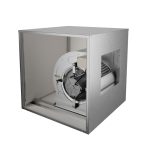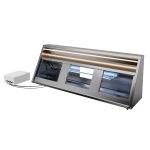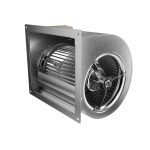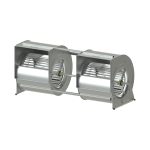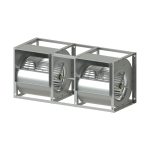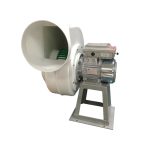Sustainability
CMC Ventilazione products purify air and surfaces, fully respect human health and the environment, do not use harmful substances or chemicals, and do not produce special waste.
Certifications
CMC Ventilazione products have been verified by independent bodies and universities for their sustainability and effectiveness. Discover the certifications obtained.

How to test the noise of an industrial fan

How to test the noise of an industrial fan
Learn how to test the noise of an industrial fan and how to prevent noise pollution in the workplace. Read our analysis of this technology.
Noise pollution in the workplace is the top cause of stress and leads to a reduction in concentration plus a worsening of performance. Installing a fan that guarantees lower noise levels is thus the first step in making the space more comfortable and increasing productivity. How can we test noise to ensure a quiet industrial fan? Let’s find out together ...
Noise limits for industrial fans
The whir of an industrial fan and the noise pollution it produces in the workplace is measured in decibels, the international unit of measurement of sound.
The European Directive 2013/10/EC sets as a limit for noise pollution in the workplace equal to 87dB(A) Leq per 8-hour work day or a peak of 140 dB(C), although already at 80 dB the employer is required to implement actions to reduce the noise within the spaces.
Under this threshold, all noises present in the environment must be considered, not only the buzz produced by the fan.
Here is an overview of the maximum noise level per work day by country:

In theory, we can say that a silent fan is one with a noise lower than 80dB. But how much this noise should actually be lower depends on the environment in which it will be inserted and on the other sources of noise present in the workspace.
To identify the exact maximum noise that an industrial fan can produce, before instalation, it is necessary to carry out an inspection and carefully evaluate all the machinery present and the noises that contribute to the total noise pollution produced in a specific work environment.
Once the noise pollution produced by the environment in the absence of an industrial fan,has been assessed, the residual dB before the noise represents a danger for workers can be determined. From here, we proceed by consulting the technical data sheets of silent industrial fans to identify the one that offers suitable noise levels.
The importance of design
The noise produced by an industrial fan is due to the movement of the individual elements present in the structure and the friction produced by the air passing through the system. As such, to reduce the noise of a fan, the design phases are decisive..
Through the choice of materials and a careful analysis of the air flow that will be generated, in fact, it is possible to reduce the friction and micro-movements of the different components, thus lowering the noisiness of the entire fan.
In addition, during the design phases it is important to use a test chamber that can determine the noise of the fan but also its energy impact, thus predicting the dB it will produce once in operation.
To guarantee our customers silent industrial fans, at we at CMC Ventilazione have an AMCA 210/ISO 5810 compliant test chamber where we test the dB produced, along with the air flow rate, static and total pressure, plus energy consumption. This allows us to produce fans that do not have a negative impact on working environments and that ensure air recirculation in respect of people and the environment.
Find out how we test the efficiency and noise of each fan.
Latest news





Tags
- AC asynchronous motor
- Boxed extraction units
- Brushless EC motor fans
- Extraction of corrosive fumes & oil mists
- F400/2h fire fume exhausters
- Fume treatment
- High temperatures
- ho.re.ca
- hvac
- Made in Italy
- Photoplasma
- Plug Fan
- Special solutions
- Transmission solutions
- Ventilatori Motore brushless EC

 Smell out
Smell out


